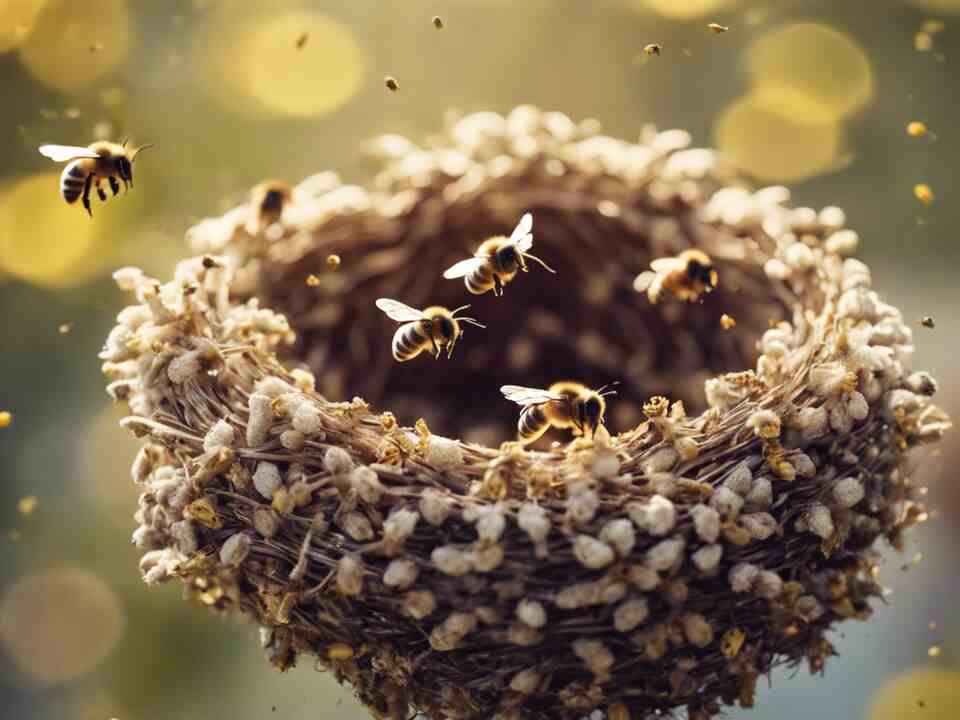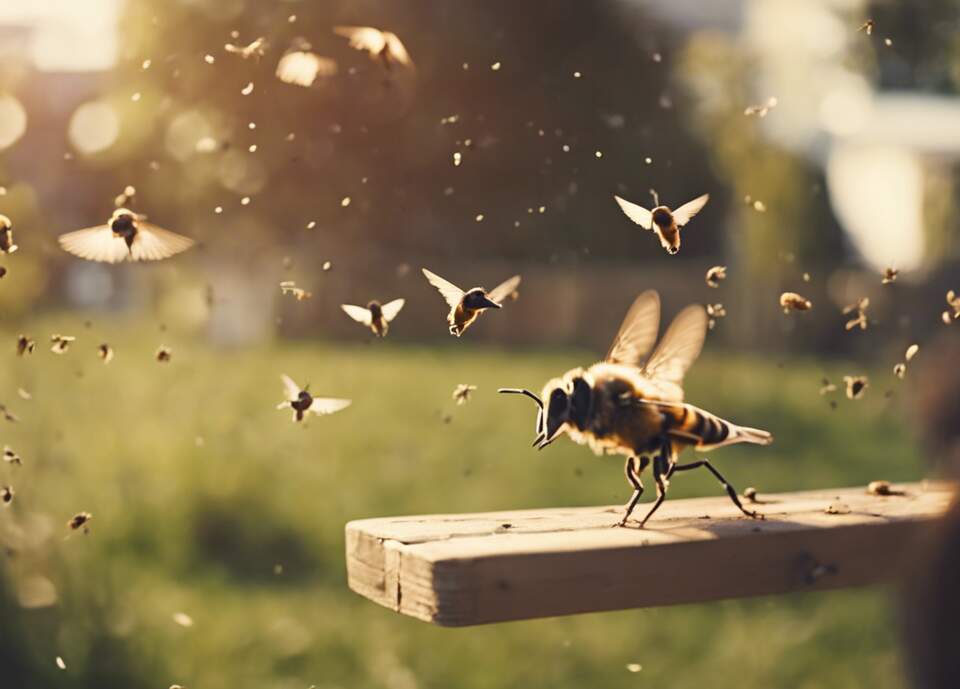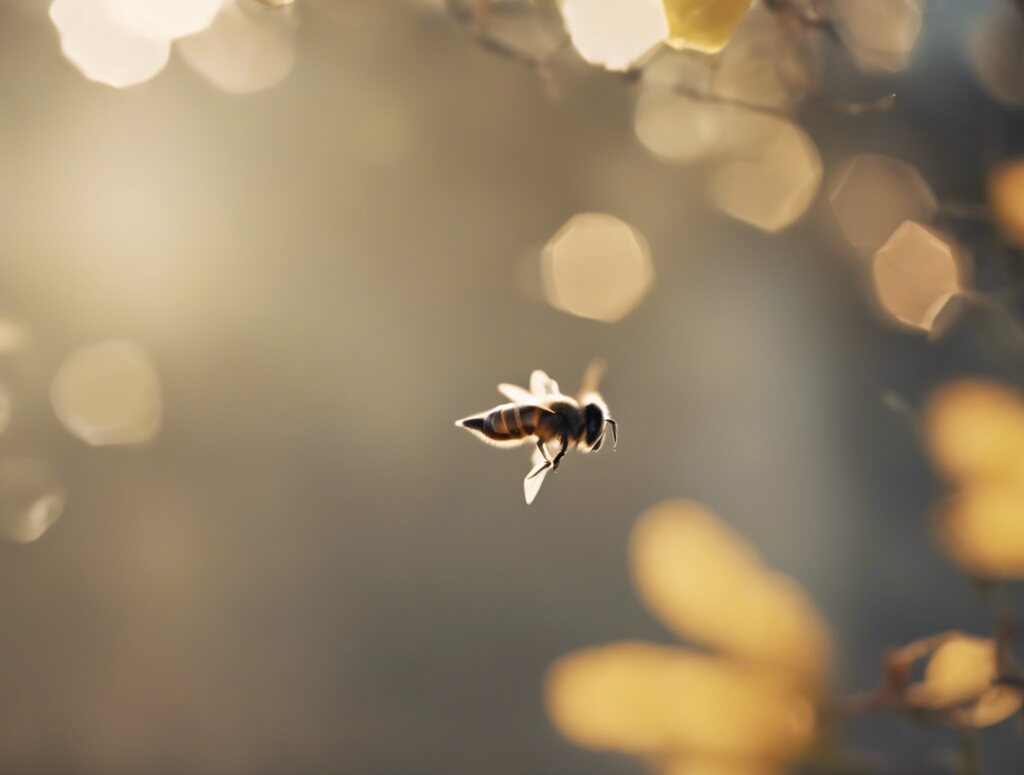Birds and bees are both essential creatures that play a crucial role in our ecosystem. While bees are known for their pollination activities that support plant growth and food production, birds also serve as important pollinators and pest controllers. However, a common question that arises is, do birds keep bees away? Let’s delve into this topic to understand the relationship between birds and bees.
Table of Contents [show]
The Role of Birds in Beekeeping: Do Birds Keep Bees Away?
Understanding the Dynamics Between Birds and Bees
Birds and bees have a complex relationship in nature. While bees focus on collecting nectar and pollen from flowers for their survival and pollination purposes, birds are more attracted to the insects that dwell in and around the flowers. Birds are known to feed on various insects like caterpillars, beetles, and grasshoppers, which are often found near flowers, but they do not typically prey on bees.
Not All Birds are Bee Eaters
While some bird species may occasionally prey on bees, it’s important to understand that most birds are not a threat to bee colonies. Insectivores, birds that primarily feed on insects, are the ones more likely to target bees. Here are some examples:
- Swallows: These agile flyers often swoop around beehives catching bees in mid-air.
- Kingbirds: These aggressive birds are known to target bees, although they may also consume other flying insects.
- Bee-eaters: As the name suggests, these birds specialize in hunting bees and wasps. However, they are not typically found in North America.
It’s important to note that even among these insectivores, bees are not always the preferred prey. Many insectivores find other insects to be easier to catch or more plentiful.
The Role of Birds in Beekeeping
In a beekeeping context, birds can have both positive and negative impacts. While birds do not actively hunt bees as a food source, their presence around beehives can create disturbances. Larger birds like woodpeckers may peck at beehives in search of bee larvae, which can be detrimental to the bee colony. Additionally, certain bird species may consume the bees’ stored honey if they have access to the beehives.
Bird Species that Coexist with Bees
Despite some challenges, many bird species actually coexist peacefully with bees. For example, the Eastern Phoebe bird is known to build its nest underneath beehives to benefit from the bees’ protection against predators. Some small bird species may also feed on the beeswax and propolis found in beehives. This symbiotic relationship highlights the intricate balance in nature where different species find ways to coexist and even support each other.
Strategies to Protect Beehives from Birds
Beekeepers often implement various strategies to protect their beehives from potential bird threats. Placing bird feeders away from beehives can help divert bird activity to other areas. Installing physical barriers like netting or wire mesh around the hives can deter birds from accessing them. Additionally, scare tactics such as hanging shiny objects or using sound devices near beehives can help keep birds at bay.
While birds may not directly keep bees away, their presence can sometimes pose challenges for beekeepers. Understanding the dynamics between birds and bees is essential to find effective solutions for coexistence. By implementing proactive measures to protect beehives from potential bird disturbances, beekeepers can help maintain the delicate balance of nature and ensure the well-being of both bees and birds in the ecosystem.

The Impact of Bird Behavior on Bee Colonies: A Comprehensive Analysis
Birds and bees have a complex relationship in nature, with birds often playing a role in pollination alongside bees. One of the common questions that arise is whether birds have any impact on bee colonies and if they keep bees away. Let’s explore this topic further to understand the dynamics between birds and bees in the ecosystem.
Bird Behavior and Bee Colonies: A Delicate Balance
Birds are known to feed on insects, including bees, as a part of their diet. While some bird species may consume bees, it is essential to note that not all birds pose a threat to bee colonies. In fact, certain bird species can benefit bee populations by feeding on other insects that may harm the bees or their habitats. This delicate balance in the ecosystem showcases how different species interact and contribute to the overall biodiversity.
Do Birds Keep Bees Away?
The notion that birds actively keep bees away is not entirely accurate. While some birds may disturb beehives out of curiosity or foraging purposes, they do not necessarily target bees to keep them away. Bee colonies have their mechanisms to protect themselves, such as stinging intruders, including birds if they pose a threat. the presence of birds in the vicinity of bee colonies does not significantly impact the bees’ population or their ability to thrive.
The Role of Birds in Pollination
While birds may not directly keep bees away, they play a crucial role in pollination, similar to bees. Certain bird species, such as hummingbirds and sunbirds, are known to feed on nectar from flowers, inadvertently aiding in the pollination process. By transferring pollen from one flower to another, these birds contribute to the fertilization of plants and the production of fruits and seeds. Therefore, the relationship between birds and bees goes beyond mere competition for resources.
Strategies for Coexistence
To ensure the harmonious coexistence of birds and bees, there are some strategies that can be implemented. Providing bird feeders and birdhouses can help redirect bird activity away from bee colonies. Additionally, creating a diverse habitat with a variety of plants can attract a range of bird species, dispersing their presence and reducing the likelihood of disturbance to bee colonies. By understanding the behaviors and needs of both birds and bees, it is possible to create an environment where they can thrive together.
While birds may interact with bee colonies in various ways, they do not necessarily keep bees away. The relationship between birds and bees is multifaceted, with both playing important roles in the ecosystem. By fostering a balanced environment that supports diverse wildlife, including birds and bees, we can promote biodiversity and ensure the sustainability of our natural habitats.

Conclusion
In the exploration of the dynamic relationship between birds and bees, it becomes evident that birds play a crucial role in the intricate balance of ecosystems. While there are instances where birds may pose a threat to bee colonies by preying on them or causing disturbances, the overall impact of birds on bees is more complex than simply keeping them away.
Understanding bird behavior and its influence on bee colonies provides valuable insights into the interconnectedness of nature and the need for conservation efforts to protect both these essential species.
As we delve deeper into the fascinating world of bird-bee interactions, it is essential to appreciate the nuanced ways in which these creatures coexist and contribute to the diversity and resilience of our natural environment.
By fostering a deeper understanding of the intricate relationships between birds and bees, we can work towards creating a harmonious balance that supports the well-being of all species involved.



